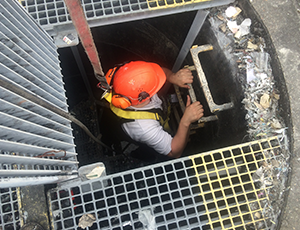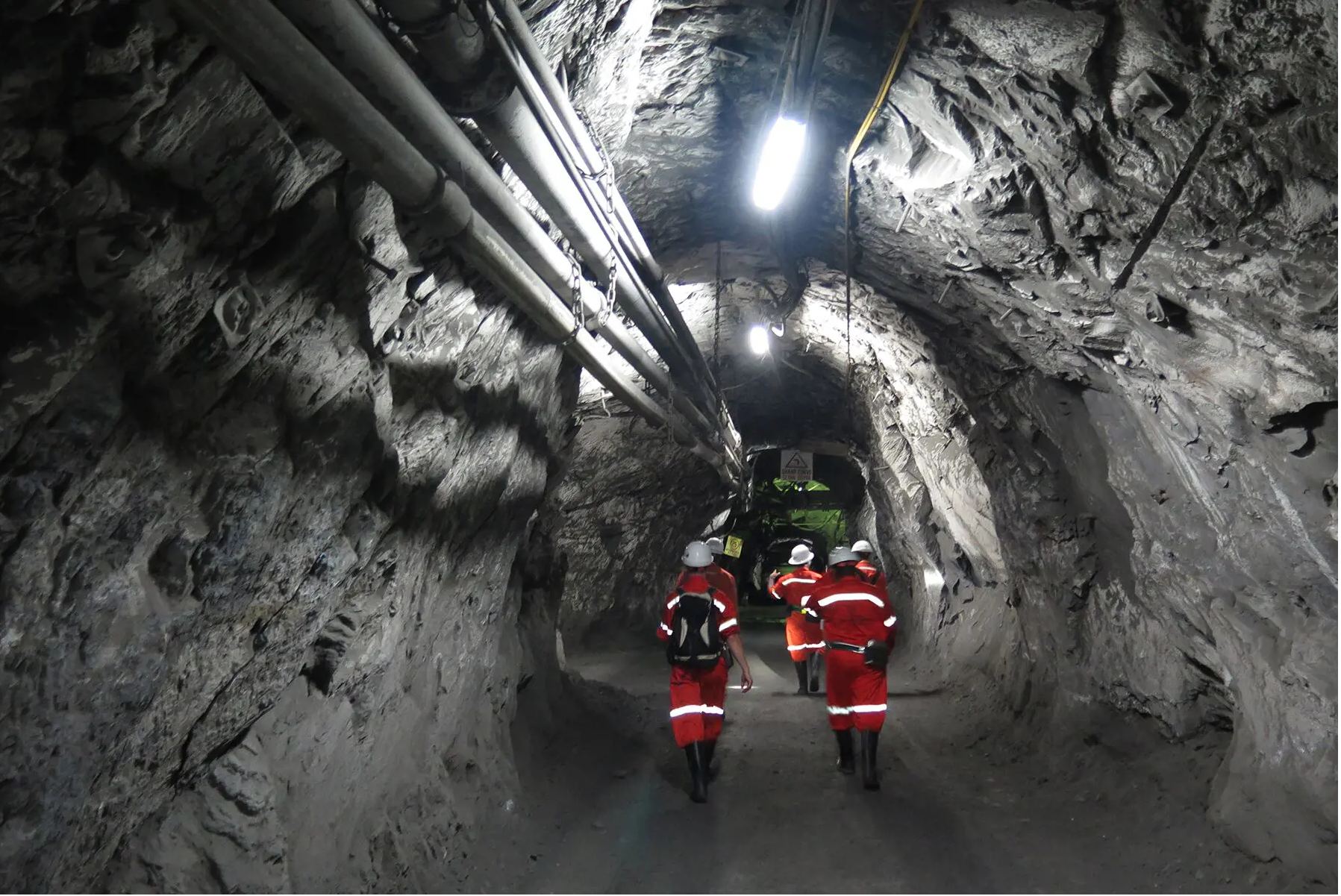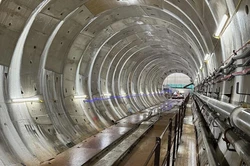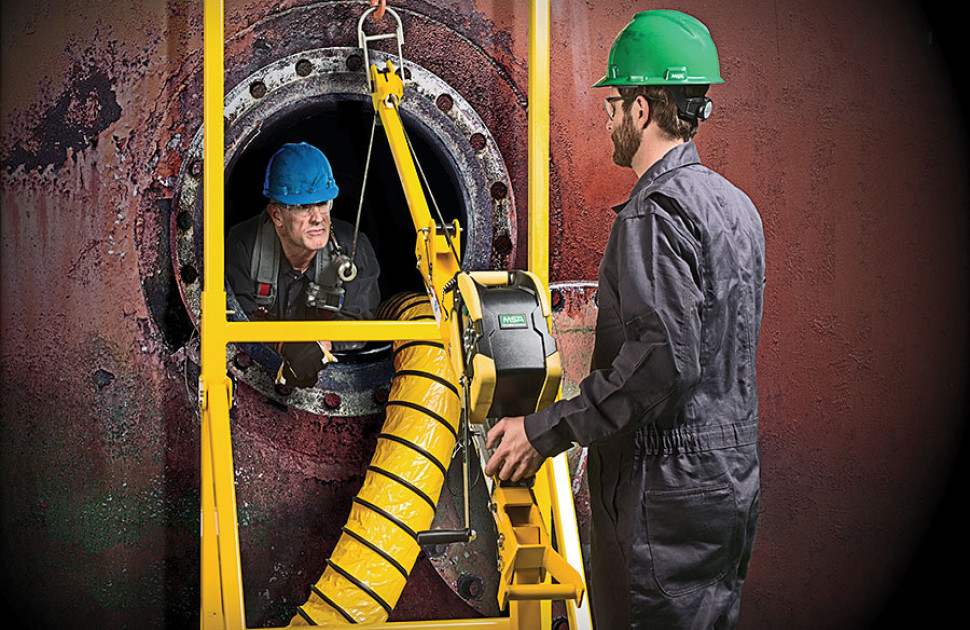Table Of Contents
- Introduction
- What are Confined Spaces?
- How to Identify a Confined Space?
- Industries where work is done in Confined Space
- Types of Work Done in Confined Spaces
- Procedure for Entering a Confined Space - Planning To Mitigate Risk
- Dangers of Working in Confined Spaces
- Confined Space Equipment
- Confined Space Inspection Drones
- Confined Space Training and Permit Requirements
- Confined Space Work Standards and Codes
- Conclusion
- Key Takeaways
Introduction
Three crew members tragically lost their lives after accessing a cargo hold in 2014 at Goole Docks in the United Kingdom.
They were overcome by toxic gases while working in a confined space.
What could have possibly gone wrong that led to this fatal accident? How can we safely access confined spaces? Read on to learn more.
This blog explores confined spaces, their significance in workplace safety, the industries involved, types of work within, entry procedures, risks, Confined Spaces Equipment, drones, training, and standards.
What are Confined Spaces?
Confined spaces are a critical aspect of workplace safety, encompassing areas not designed for continuous human occupancy, often posing significant risks due to their design, contents, or associated work activities.
These spaces can vary in size and location, from underground vaults and tanks to Aircraft wings and manholes.
They are characterized by limited entry and exit points and may harbor hazardous atmospheres or materials.
Understanding the concept of confined spaces and their potential dangers is essential for ensuring the safety and well-being of workers in various industrial settings.
How to Identify a Confined Space?

Identifying a confined space involves several factors beyond just physical dimensions.
Most confined spaces are typically indoors and satisfy three criteria:
- Large enough for a person to enter
- Not meant for continuous human occupancy
- Has limited entry/exit points.
These are relatively easy to recognize. However, some instances demand a more creative perspective.
For instance, a ditch may be considered confined if it's challenging to enter or leave.
Similarly, the inside of an airplane's wing, requiring periodic Inspections, might qualify as a confined space.
One critical aspect to consider is safety implications.
Confined spaces often pose life-threatening conditions, like toxic gasses or hazardous materials, but these elements aren't always present.
For example, Large sewer pipes might house hazardous substances.
In essence, identifying a confined space goes beyond physical dimensions and involves assessing safety risks and access challenges.
Industries where work is done in Confined Space
Work in confined spaces is prevalent across various industries due to the unique nature of their operations.
Here are industries where confined space work is common:
- Oil & Gas
The Oil and Gas Industry involves operations in facilities like refineries, storage tanks, and offshore rigs.
Workers often enter confined spaces such as chimneys, tanks, and jetties for maintenance and inspections.
Safety is paramount due to the presence of flammable materials.
- Chemicals
Chemical facilities house fermenter tanks, Pressure Vessels, and heat exchangers, all of which require regular inspections.
Safety protocols are rigorous because of potential exposure to hazardous chemicals.
- Mining

Mines have confined spaces like stops, ore passes, and crushers.
Miners may enter these areas for excavation and maintenance.
These spaces pose risks like cave-ins and gas exposure, demanding stringent safety measures.
- Power Generation
NDT Techniques in Power Plants, including coal-fired boilers and nuclear facilities, have confined spaces like recovery boilers and chimneys.
Workers enter for maintenance, inspections, and repairs, necessitating safety precautions due to the potential for electrical hazards.
- Wastewater Treatment
Sewers, pipes, and manholes in wastewater systems require maintenance.
Workers enter to conduct repairs and inspections. Hazards include toxic gases and drowning, demanding thorough safety training.
- Maritime Industry
Shipping yards and marine vessels have ballast tanks, shipping containers, and fish holds.
Workers enter these confined spaces for maintenance and cargo handling. Safety is critical due to potential gas and suffocation risks.
- Construction
In construction, confined spaces include crawl spaces, vaults, and tunnels. Workers may enter for installations and repairs.
Safety protocols are essential to prevent accidents in these tight spaces.
Confined spaces can also be found in various other contexts like bins, silos, vats, and aircraft wings.
Each presents unique challenges and safety concerns, requiring specialized NDT Training and equipment.
Across these industries, confined space work demands strict adherence to safety standards, including permits, continuous monitoring, and specialized training to mitigate risks and ensure worker well-being.
Types of Work Done in Confined Spaces

Confined space entry encompasses various types of work, each demanding specific precautions and safety measures due to the inherent risks involved.
Here are common types of work conducted in confined spaces:
- Inspections and Testing
Regular inspections are crucial in confined spaces like storage tanks, Pipelines, and sewers to identify defects, corrosion, and structural integrity.
In these inspections, these techniques are generally called Non-destructive Testing (NDT).
Here are the most common types of NDT Methods that inspectors use in confined spaces:
Visual Testing
Radiography Testing
Acoustic Emission Testing
Eddy Current Testing
Leak Testing
Magnetic Particle Testing
Testing may involve assessing air quality for hazardous gasses.
- Maintenance and Repairs
Confined spaces often require maintenance tasks, such as Welding, painting, or equipment repairs.
This work ensures that facilities continue to function correctly.
- Cleaning and Decontamination
Some confined spaces, like chemical tanks and sewers, must be cleaned regularly to remove debris, residue, or hazardous materials. Decontamination of surfaces is also common.
- Rescue and Emergency Response
In the event of an accident or injury, confined space workers must be rescued quickly and safely.
This involves specialized training and equipment.
- Welding and Cutting
Welding and cutting may be necessary in confined spaces like Pipelines and tanks for repairs or modifications.
- Construction and Installation
New construction or installation work may require confined space entry for foundations, Pipelines, or utility installations.
- Material Handling
Workers may enter confined spaces for material handling tasks, such as loading, unloading, or arranging stored items.
Regardless of the type of work in confined spaces, comprehensive training, continuous monitoring, adherence to safety protocols, and emergency preparedness are paramount to mitigate risks and ensure the well-being of workers.
Procedure for Entering a Confined Space - Planning To Mitigate Risk
Before embarking on a confined space operation, it is imperative to follow a well-structured plan, encompassing meticulous preparation and hazard mitigation.
Here is a comprehensive procedure, following the necessary training and permits:
1. Preliminary Survey and Hazard Assessment
- Identify Hazards:
Start with an exhaustive survey of the confined space, pinpointing potential hazards inherent to the work environment.
- Risk Assessment:
Execute a risk evaluation, systematically documenting the probability, magnitude, and possible repercussions of each identified hazard.
- Workforce Documentation:
Record the count of personnel scheduled to work within the confined space.
- Anticipate Changes:
Document any foreseeable alterations or activities that may transpire within the confined space.
2. Formulate and Execute a Plan
- Signage and Barricades:
Erect conspicuous signage, clearly indicating ongoing confined space work, and barricade entry and exit points to restrict unauthorized access.
- Emergency Preparedness:
Develop a robust emergency response plan that caters to potential rescues and contingencies, addressing each hazard delineated during the initial survey.
- Standby Person's Role:
Define the responsibilities of the designated standby individual, outlining the specific actions they are expected to undertake in the event of a rescue or emergency scenario.
3. Hazard Mitigation Before Entry
- Hazard Isolation:
Take requisite measures to isolate and secure identified hazards within the confined space, rendering them harmless.
- Space Preparation:
Before entry, ensure the confined space is thoroughly cleaned, purged, and adequately ventilated to eliminate contaminants.
- Atmospheric Assessment:
Continuously assess and monitor the atmosphere within the confined space, emphasizing oxygen levels and the presence of hazardous gasses.
- Program Establishment:
For operations necessitating recurrent confined space entries, institute a confined space hazard assessment and control program.
This program should encompass detailed protocols for the above-mentioned steps, facilitating a systematic approach to safety.
This structured procedure, along with rigorous training and adherence to safety protocols, serves as an effective blueprint for mitigating risks associated with confined space entries.
It prioritizes the welfare of workers, ensuring a secure working environment in challenging confined spaces.
Dangers of Working in Confined Spaces
Confined spaces encompass a wide range of potential hazards, some of which can be even more dangerous due to the limited space and reduced ventilation.
These hazards include:
- Poor Air Quality
Confined spaces may have insufficient oxygen levels, toxic gasses, or simple asphyxiants like argon or nitrogen, which can displace oxygen and lead to rapid poisoning, unconsciousness, or death.
Naturally occurring reactions can deplete oxygen from the atmosphere within a confined area.
An interaction between some soils and oxygen, or between groundwater and chalk or limestone, results in the production of carbon dioxide, which displaces oxygen. Inside tanks, rust formation can lead to a lack of oxygen.
Three crew members died in 2014 after accessing a cargo hold at Goole Docks.
- Chemical Exposure
Workers in confined spaces can be exposed to toxic gasses, chemicals through skin contact or ingestion, and inhalation of harmful substances, posing health risks.
Poisonous gases can enter the confined space via a burst gas pipe or contaminated land.
They may also be produced as a result of the work being done, such as welding, adhesives, or paint fumes.
These gases and fumes, if not removed or ventilated, can create a hazardous atmosphere inside the confined space.
- Fire and Explosion
Accumulation of flammable gases, liquids, or combustible dust in confined spaces can create explosive atmospheres, increasing the risk of fires and explosions.
When any hot work or sparking equipment is utilized within the confined area, the risk is increased manifold. Excessive quantities of oxygen also increase the risk of fire and explosion.
- Process-Related Hazards
Residual chemicals or sudden release of supply line contents can present process-related dangers within confined spaces.
Dust can accumulate in confined spaces, either naturally or as a result of the operation being performed, such as drilling or grinding.
Inhaling too much dust causes respiratory issues and inhaling hazardous dust can be fatal.
Dust accumulation can also enhance the risk of a fire or explosion, particularly in areas with poor ventilation.
- Physical Hazards
Limited space may expose workers to various physical hazards, including noise, extreme temperatures (heat or cold), radiation, vibration, electrical risks, and inadequate lighting.
Smoke particles or poor lighting conditions can impair visibility, making work even riskier.
Strenuous construction activity, hot work, or naturally occurring hot conditions can cause dangerously high body temperatures.
This can soon become an issue in restricted locations that are difficult to escape from.
Because of the contained nature of a confined space, temperature can shoot up quickly. This can result in heatstroke, exhaustion, and collapse.
- Safety Hazards
Confined spaces can harbor moving equipment parts, structural hazards, risks of engulfment, entanglement, slips, falls, and interactions with vehicular or pedestrian traffic.
The shifting or collapse of bulk materials can lead to engulfment and burying workers under massive loads.
- Biological Hazards
Confined spaces may contain biological hazards like viruses, bacteria from fecal matter, sludge, fungi, or molds, posing health threats to workers.
Identifying and addressing these hazards, along with rigorous safety measures, training, and proper equipment, are essential for ensuring the safety of individuals working in confined spaces.
Confined Space Equipment
Confined space equipment is vital for ensuring safety and efficiency in challenging environments.
Here's an overview of the devices used:
- Personal Protective Equipment (PPE):
Essential for varying confined space hazards, including hard hats, gloves, eye protection, footgear, flame-resistant clothing for explosive environments, chemical-resistant gloves, and fall protection harnesses.
- Systems for Confined Space Entry:
Facilitate horizontal or vertical entry, such as hoists for lifting and positioning.
- Retractable Devices:
Provide bi-directional retrieval and fall protection for safe entry and exit.
- Ventilation Equipment:
Ensures fresh air supply, contaminant removal, and improved air quality.
- Rescue and Retrieval Equipment:
Includes harnesses, tripods, hoists, and winches for confined space rescues.
- Confined Space Entry Permit Systems:
Establish safety protocols with checklists, documentation, and approvals.
- Non-Sparking Tools:
Prevent ignition in explosive atmospheres, reducing fire and explosion risks.
- Remote Data Collection Equipment:
Minimizes human entry with tools like Camera-on-a-Stick, Crawler Robots for inspections in pipes and ducts, Snake Robots for agile access, and Climber Robots using magnets on metallic surfaces.
Confined Space Inspection Drones
A confined space Drone Inspection is a specialized and essential tool used for inspecting challenging environments that are difficult for humans to access safely.
A notable example is Flyability's Elios 3, designed exclusively for confined space inspections.
Unlike ground-based robots, these indoor drones offer unmatched versatility.
Their ability to navigate in three dimensions enables access to virtually any area within a confined space, regardless of its shape or material.
However, flying indoors poses unique challenges, such as turbulence from the limited air volume, signal interference, dust, darkness, and reflective surfaces that affect image quality.
The Elios 3 addresses these challenges effectively. Enclosed within a protective cage, it boasts collision-tolerance features, allowing it to maneuver safely in confined spaces without the risk of damage.
Even in dusty or pitch-black conditions, its advanced lighting and stability capabilities ensure the collection of high-quality images.
This technology represents a significant leap in ensuring the safety and efficiency of inspections within confined spaces, where traditional methods would be impractical or hazardous.
Confined Space Training and Permit Requirements
Confined space training is crucial due to the dangers of such environments.
It equips workers with vital skills, including air quality testing, lockout and tagout procedures, ventilation techniques, and observation skills for assessing hazards.
Additionally, training emphasizes thorough rescue planning.
In the United States, OSHA mandates confined space certification under the 29 CFR 1910.146 standard.
To become certified, workers must pass a written exam with a score of at least 80%.
This exam evaluates their knowledge of confined space definitions, OSHA standards, the establishment of permit-required confined space (PRCS) programs, roles and responsibilities, emergency procedures, and equipment usage. Such training is vital for worker safety.
Confined space permit requirements are critical safety measures for protecting workers in hazardous environments. A strict protocol is followed before entering these spaces:
- Hazard Assessment
Identifying potential risks, such as toxic gases and physical hazards.
- Detailed Plan
Develop an entry plan with procedures and emergency protocols.
- Training
Ensuring all workers are proficient in confined space procedures and rescues.
- Ventilation
Maintaining safe air quality through proper ventilation.
- Continuous Monitoring
Regularly checking the atmosphere for hazardous gases and oxygen levels.
- Permit Issuance
A permit is issued only after a thorough assessment and ensuring compliance with safety measures.
- Safe Entry
Workers can enter with the permit, ensuring continuous monitoring and adherence to the plan.
Permit-required confined space entry is crucial for risk mitigation in challenging environments.
In the United States, the need for a confined space permit depends on whether the work is planned in a Permit-Required Confined Space (PRCS), as defined by OSHA.
PRCS may contain a hazardous atmosphere, materials that can engulf entrants, structures trapping or asphyxiating entrants, or other recognized hazards.
When a PRCS permit is obtained, workers conduct hazard assessments and devise entry and rescue plans.
Some confined spaces meet the definition but don't require permits, like equipment closets or crawl spaces, still requiring caution due to potential risks.
These are non-permit-required confined spaces and do not follow the formal PRCS permitting process.
Confined Space Work Standards and Codes
Confined space work standards and codes are vital for ensuring the safety of workers in potentially hazardous environments.
These guidelines are designed to protect employees and establish secure working conditions within confined spaces.
Key standards and codes include:
- OSHA (Occupational Safety and Health Administration)
OSHA's 29 CFR 1910.146 defines confined spaces, outlines procedures for permit-required confined spaces (PRCS), and assigns responsibilities for workers and employers in confined space operations.
- NFPA (National Fire Protection Association)
NFPA 350 provides comprehensive guidance on confined space evaluation, classification, and safe entry procedures.
It explains how to comprehend confined space safety and protect employees from fire, explosion, and other health threats that are particular to restricted spaces.
Also, it describes the training, qualifications, and competencies required for employees responsible for confined space hazard identification, evaluation, and control for those who work in and near confined spaces.
NFPA 306 focuses on safety in confined spaces on vessels.
- ANSI (American National Standards Institute)
ANSI/ASSE Z11.1-2022 standard specifies the minimum safety criteria for entering, exiting, and operating in and around confined spaces at atmospheric pressure.
This standard is intended for voluntary acceptance and application.
- API (American Petroleum Institute)
This standard applies to stationary atmospheric and low-pressure aboveground petroleum storage tanks (up to and including 15 psig) used in all areas of the petroleum and petrochemical industries, including crude oil refining, petrochemicals, Pipelines and terminals, bulk storage, and ethanol plants.
This standard specifies the requirements for properly planning, coordinating, and carrying out tank entry and cleaning activities, from removal to return to service.
This standard does not cover every possible unique hazard or circumstance that may happen during tank cleaning activities.
Employers must address site, product, and tank-specific hazards and situations using the relevant concepts and considerations outlined in this standard.
- EU Directive 92/91/EEC
This European directive sets minimum requirements for personal protective Confined Spaces Equipment.
ISO (International Organization for Standardization)
ISO 14520-1 provides standards and guidelines for the design, installation, operation, and maintenance of gaseous fire-extinguishing systems that are used to protect enclosed areas or volumes against fire.
Compliance with ISO 14520-1 ensures that gaseous fire-extinguishing systems are designed and operated in a manner that effectively protects people and property in confined spaces from fire hazards.
These systems utilize gases as an extinguishing agent to suppress or extinguish fires in environments where water or other traditional methods might be unsuitable or ineffective.
Compliance with these standards is essential to protect workers and prevent accidents in confined spaces, and all parties involved should be well-informed and follow these regulations diligently.
Conclusion
Confined spaces present unique challenges and risks in various industries.
Identifying these spaces, adhering to stringent safety protocols, and utilizing specialized equipment, including Drone Inspection, are critical for worker safety and efficient operations.
Training and permit requirements, along with compliance with industry standards and codes, are paramount for mitigating hazards and ensuring a secure working environment in confined spaces.
Key Takeaways
- Confined spaces refer to areas not designed for continuous human occupancy.
- Confined spaces are typically large enough for a person to enter, not meant for continuous occupancy, and have limited entry/exit points.
- Industries with confined space work include the Oil and Gas Industry, chemical, mining, power generation, wastewater, maritime, and construction.
- Dangers of working in confined spaces include poor air quality, chemical exposure, fire and explosion, process-related hazards, physical hazards, safety hazards, and biological hazards.
- OSHA, NFPA, ANSI, API, EU Directive, and ISO provide guidelines for safe confined space operations. Compliance with these standards is crucial for worker safety.
References
1. Baseline Training
2. J3M Training
3. SRK Consulting









